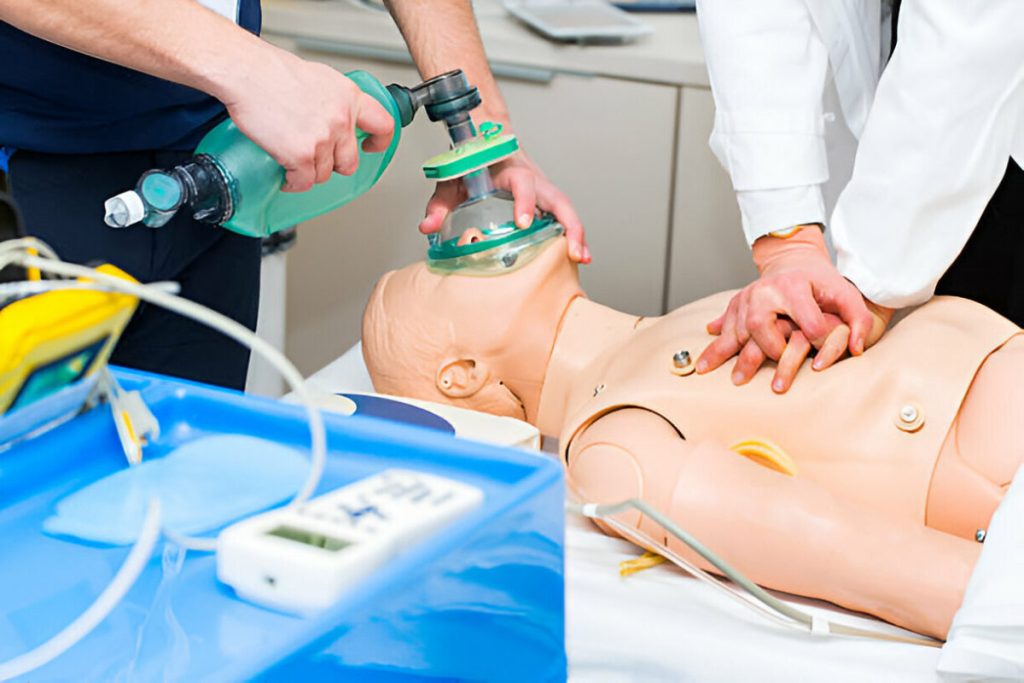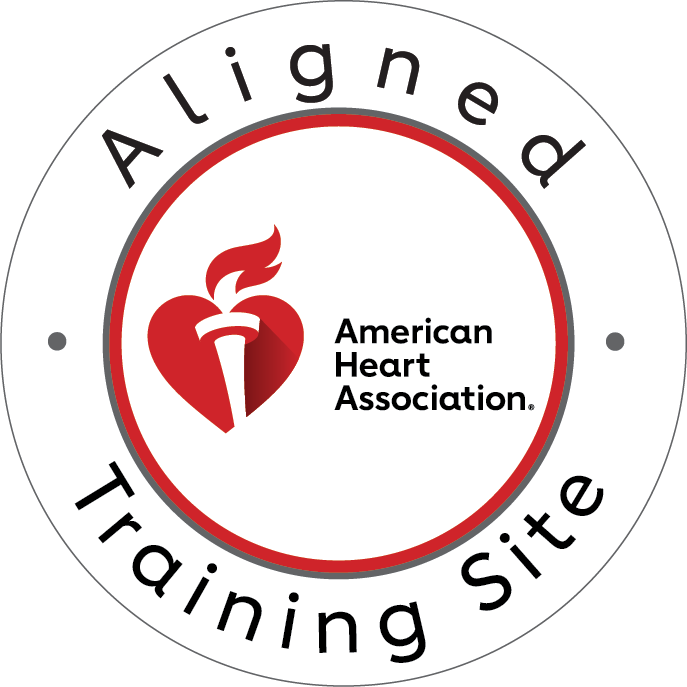In emergency situations, effective ventilation can make the difference between life and death. Bag-mask ventilation (BMV) is a critical skill for healthcare providers and first responders, serving as the cornerstone of emergency respiratory support. This article explores the essential aspects of bag-mask ventilation, detailing techniques and best practices that ensure optimal patient outcomes during resuscitation efforts.
What is Bag-Mask Ventilation?
Bag-mask ventilation, also known as bag-valve-mask (BVM) ventilation, is a manual technique used to provide positive pressure ventilation to patients who are not breathing adequately or at all. This life-saving procedure delivers oxygen to patients experiencing respiratory distress, respiratory arrest, or cardiac arrest, supporting oxygenation until more definitive airway management can be established.
The standard BVM device consists of three main components:
- A self-inflating bag that refills automatically after compression
- A one-way valve system that directs oxygen to the patient and prevents rebreathing of exhaled air
- A face mask designed to create a tight seal over the patient’s nose and mouth
When properly executed, bag-mask ventilation serves as an effective bridge to advanced airway management techniques such as endotracheal intubation or as a primary ventilation method during short-term respiratory support. The technique is versatile, applicable across various clinical settings from pre-hospital emergency care to in-hospital resuscitation scenarios.
What is the Most Effective Way to Deliver Bag-Mask Ventilation?
Achieving effective bag-mask ventilation requires attention to several key elements that work in concert to optimize oxygen delivery while minimizing complications.
Equipment Selection
The foundation of effective bag-mask ventilation begins with proper equipment selection:
- Appropriately sized mask: Selecting the right mask size is crucial for creating an effective seal. The mask should extend from the bridge of the nose to the cleft of the chin, covering the mouth and nose completely without extending over the eyes or past the chin.
- Proper bag volume: Adult bags should have a volume of 1600-2000mL, while pediatric bags typically range from 450-500mL. Neonatal bags are smaller, usually 250 mL.
- Oxygen reservoir: When available, an oxygen reservoir should be attached to increase the delivered oxygen concentration from approximately 40-60% to nearly 100%.
- Pressure manometer: Including a pressure manometer allows for monitoring of ventilation pressures, helping prevent excessive pressure that could lead to gastric insufflation or barotrauma.
The Two-Person Technique
Research consistently demonstrates that two-person bag-mask ventilation is superior to the single-provider approach:
In the two-person technique:
- One provider focuses exclusively on maintaining a proper mask seal using both hands
- The second provider is dedicated to squeezing the bag at the appropriate rate and volume
- This division of labor allows for improved mask seal, more consistent tidal volumes, and reduced provider fatigue
Studies show that the two-person technique can achieve tidal volumes up to 50% greater than single-person techniques while maintaining lower airway pressures, significantly improving ventilation efficacy.
Oxygenation Optimization
To maximize oxygenation during bag-mask ventilation:
- Connect the BVM to an oxygen source at 15 L/min
- Ensure the oxygen reservoir is properly attached and functioning
- Allow sufficient time for the reservoir to fill between ventilations
- Maintain appropriate ventilation rates: 10-12 breaths per minute for adults, 12-20 for children, and 40-60 for neonates
What Are the Guidelines for Bag-Mask Ventilation?
Current resuscitation guidelines provide specific recommendations for bag-mask ventilation techniques across different patient populations. These evidence-based guidelines are regularly updated by organizations such as the American Heart Association (AHA) and the European Resuscitation Council (ERC).
Adult Bag-Mask Ventilation Guidelines
For adult patients:
- Deliver each breath over 1 second
- Provide sufficient volume to produce a visible chest rise
- Avoid excessive ventilation (too rapid or too forceful)
- Maintain a ventilation rate of 10-12 breaths per minute during CPR
- Use a 30:2 compression-to-ventilation ratio for single-rescuer CPR
- During advanced cardiac life support with a secure airway, switch to continuous compressions with 1 breath every 6 seconds (10 breaths/min)
Pediatric Bag-Mask Ventilation Guidelines
For pediatric patients:
- Deliver each breath over 1 second
- Provide just enough volume to cause a visible chest rise
- Maintain a ventilation rate of 12-20 breaths per minute
- Use a 30:2 compression-to-ventilation ratio for single-rescuer CPR
- Use a 15:2 compression-to-ventilation ratio for two-rescuer CPR in children
Neonatal Bag-Mask Ventilation Guidelines
For neonatal patients:
- Initial breaths may require longer inflation times (1-2 seconds)
- Subsequent breaths should be delivered at a rate of 40-60 breaths per minute
- Use a 3:1 compression-to-ventilation ratio during CPR
- Chest rise should be visible but gentle to avoid lung injury
Special Considerations
Current guidelines also address special circumstances:
- For pregnant patients, manual displacement of the uterus to the left is recommended to relieve aortocaval compression
- In trauma patients, in-line stabilization of the cervical spine should be maintained during bag-mask ventilation
- For suspected opioid overdose, bag-mask ventilation should be initiated before or concurrently with naloxone administration
What Are the Techniques of Bag-Mask Ventilation?
Successful bag-mask ventilation relies on mastering several fundamental techniques that ensure optimal ventilation while minimizing complications.
Proper Positioning
Before initiating bag-mask ventilation, proper patient positioning is essential:
- Position the patient: Place the patient in a supine position with the head in a neutral or slightly extended position (avoiding hyperextension in trauma cases).
- Open the airway: Use appropriate airway maneuvers based on the clinical situation.
- Head-tilt/chin-lift for non-trauma patients
- Jaw-thrust for patients with suspected cervical spine injury
- Consider the insertion of airway adjuncts like oropharyngeal or nasopharyngeal airways
- Optimize patient alignment: Align the ear with the sternal notch by positioning the patient’s head on a towel or pad if needed, creating the “sniffing position” that optimizes airway patency.
Mask Seal Techniques
Achieving and maintaining an effective mask seal is perhaps the most challenging aspect of bag-mask ventilation. Several hand positions can be used:
- C-E technique: The thumb and index finger form a “C” shape around the mask, while the remaining fingers create an “E” shape along the mandible, lifting it forward.
- Two-handed technique: Both hands create a “C” shape around the mask while lifting the jaw forward, with a second provider squeezing the bag.
- Thenar eminence technique: The provider places the thenar eminences (the fleshy parts at the base of the thumbs) on either side of the mask while using the remaining fingers to lift the jaw.
Ventilation Dynamics
Proper ventilation dynamics focus on the following principles:
- Appropriate tidal volume: Deliver enough volume to cause a visible chest rise without overinflation.
- Controlled inflation pressure: Typical adult ventilation requires approximately 15-20 cmH₂O pressure. Higher pressures may be needed in patients with decreased lung compliance.
- Adequate inspiratory time: Deliver each breath over 1 second for adults and children.
- Proper ventilation rate: Follow guideline-recommended rates based on patient age and clinical scenario.
- Exhalation allowance: Provide sufficient time for complete exhalation between breaths to prevent air trapping and barotrauma.
Troubleshooting Common Issues
When difficulties arise during bag-mask ventilation, a systematic approach to troubleshooting is essential:
- Inadequate ventilation: Reassess and adjust mask seal, reposition the patient’s head, consider inserting airway adjuncts, or switch to a two-person technique.
- Resistance to ventilation: Check for airway obstruction, reposition the head, suction if necessary, or consider increasing ventilation pressure if treating bronchospasm.
- Gastric insufflation: Apply cricoid pressure if trained personnel are available, reduce tidal volume while maintaining frequency, and consider nasogastric tube placement if prolonged ventilation is anticipated.
- Declining oxygen saturation: Ensure oxygen supply is connected and flowing, check for leaks in the system, and consider more advanced airway management if hypoxemia persists.
What is the Preferred Technique for BVM?
While various approaches to bag-mask ventilation exist, current evidence and expert consensus support the two-person bag-mask ventilation technique as the preferred approach, particularly in challenging scenarios.
Benefits of the Two-Person Technique
The two-person technique offers several distinct advantages:
- Superior mask seal: With one provider dedicated to maintaining the mask seal using both hands, air leakage is significantly reduced, improving ventilation efficiency.
- More consistent tidal volumes: The second provider can focus exclusively on delivering appropriate and consistent tidal volumes.
- Reduced provider fatigue: Dividing responsibilities between two providers reduces individual fatigue during prolonged resuscitation efforts.
- Lower peak airway pressures: Studies demonstrate that the two-person technique achieves effective ventilation with lower peak airway pressures, reducing the risk of gastric insufflation and subsequent aspiration.
- Improved multitasking: With dedicated responsibilities, providers can better monitor patient response, adjust technique as needed, and communicate effectively with the resuscitation team.
Optimal Hand Positioning
For the preferred two-person technique, the provider maintaining the mask seal should use the thenar eminence technique:
- Position the thumbs and thenar eminences on the top half of the mask
- Place the index and middle fingers on the bottom half of the mask
- Use the ring and little fingers to lift the mandible toward the mask
- Apply downward pressure with the thenar eminences while simultaneously lifting the jaw upward
This approach distributes pressure more evenly across the mask and facilitates an optimal seal while maintaining airway patency.
Coordination Between Providers
Effective communication and coordination between providers are essential elements of the preferred technique:
- The provider maintaining the mask seal should communicate any issues with the mask fit or seal
- The provider delivering ventilations should announce each ventilation to maintain appropriate rates
- Both providers should monitor chest rise to ensure adequate but not excessive ventilation
- Regular rotation of roles can prevent provider fatigue during prolonged resuscitation efforts
Overcoming Common Challenges in Bag-Mask Ventilation
Even with optimal technique, bag-mask ventilation can present challenges that require specific strategies to overcome.
Difficult Mask Ventilation Scenarios
Certain patient characteristics increase the difficulty of achieving effective bag-mask ventilation:
- Obesity: In patients with obesity, elevating the head and shoulders on towels or blankets to create a ramped position can improve airway alignment and facilitate ventilation.
- Edentulous patients: The absence of teeth can make achieving an adequate mask seal difficult. Filling the cheeks with gauze or using a smaller mask size can improve the seal in these patients.
- Facial hair: Dense facial hair can impede mask seal. Applying a water-soluble lubricant to the beard or using an LMA (laryngeal mask airway) may be considered as alternatives.
- Facial trauma or abnormalities: Patients with facial trauma or abnormalities may require creative modifications to standard techniques, including potential use of oral or nasal airways or consideration of early advanced airway placement.
- Increased airway resistance: Conditions like bronchospasm or airway edema increase resistance to ventilation. Longer expiratory times and careful attention to avoiding air trapping are essential in these scenarios.
Preventing Complications
Proper technique also focuses on minimizing potential complications:
- Gastric insufflation: Maintaining appropriate ventilation pressures and rates, along with proper head positioning, helps reduce gastric insufflation.
- Barotrauma: Avoiding excessive pressure by focusing on visible chest rise rather than delivering set volumes helps prevent barotrauma.
- Hypoxemia: Ensuring proper oxygen flow, adequate ventilation rates, and effective mask seal minimizes the risk of hypoxemia.
- Aspiration: Proper positioning, appropriate ventilation pressures, and consideration of cricoid pressure in high-risk situations can reduce aspiration risk.
- Cardiovascular effects: Excessive ventilation can increase intrathoracic pressure and decrease venous return, potentially compromising circulation during resuscitation efforts.
The Role of Bag-Mask Ventilation in Modern Resuscitation
Bag-mask ventilation remains a foundational skill in emergency care despite advances in airway management technology. Its versatility and immediate availability make it an essential component of the emergency response continuum.
Integration with Advanced Airway Management
Bag-mask ventilation serves as a bridge to advanced airway management while continuing to play a role even after advanced airway placement:
- Pre-oxygenation: Effective bag-mask ventilation provides crucial pre-oxygenation before intubation attempts, creating an oxygen reservoir that extends the safe apnea period.
- Rescue ventilation: When advanced airway attempts are unsuccessful, reverting to bag-mask ventilation provides essential oxygenation and ventilation until the next intervention.
- Post-intubation: The bag-mask device connects to advanced airways, providing controlled ventilation after successful placement.
Quality Improvement in Bag-Mask Ventilation
Recent emphasis on high-quality resuscitation has led to focused training and quality improvement initiatives related to bag-mask ventilation:
- Simulation-based training: Regular practice with high-fidelity simulators improves provider competence and confidence in bag-mask ventilation techniques.
- Real-time feedback devices: Pressure manometers and flow sensors provide immediate feedback on ventilation quality during both training and actual resuscitations.
- Team-based approaches: Integrating bag-mask ventilation into team-based resuscitation training emphasizes coordination and communication between providers.
- Quality metrics: Implementation of quality metrics specific to ventilation, including rate, volume, and pressure measurements, helps identify areas for improvement.
Conclusion: Mastering Bag-Mask Ventilation for Optimal Patient Outcomes
Bag-mask ventilation remains an indispensable skill in emergency care, requiring both technical proficiency and clinical judgment. By understanding the principles, practicing the proper techniques, and following current guidelines, healthcare providers can deliver effective ventilatory support during critical moments of patient care.
The preferred two-person technique, with its focus on optimal mask seal and controlled ventilation, represents the gold standard for bag-mask ventilation. However, all providers should be proficient in both single and two-person techniques to adapt to varying clinical scenarios and resource availability.
As with all resuscitation skills, regular practice, ongoing education, and quality improvement initiatives are essential to maintaining proficiency in bag-mask ventilation. By committing to excellence in this fundamental skill, healthcare providers ensure they can deliver optimal care when patients need it most.
Take Action: Enhance Your Resuscitation Skills Today
Are you looking to improve your bag-mask ventilation technique and overall resuscitation capabilities? CPR St. Louis offers comprehensive BLS certification St. Louis and CPR certification St. Louis courses that focus on high-quality resuscitation skills, including proper bag-mask ventilation techniques.
As an American Heart Association training site, CPR St. Louis provides both initial certifications and renewals in BLS for Healthcare Providers, ACLS, PALS, and CPR and First Aid courses. All classes are stress-free and hands-on, ensuring you gain confidence in these critical skills.
Don’t wait until you’re faced with an emergency to improve your skills. Contact CPR St. Louis today—the best CPR in St. Louis—and ensure you’re prepared to provide high-quality resuscitation when it matters most.





